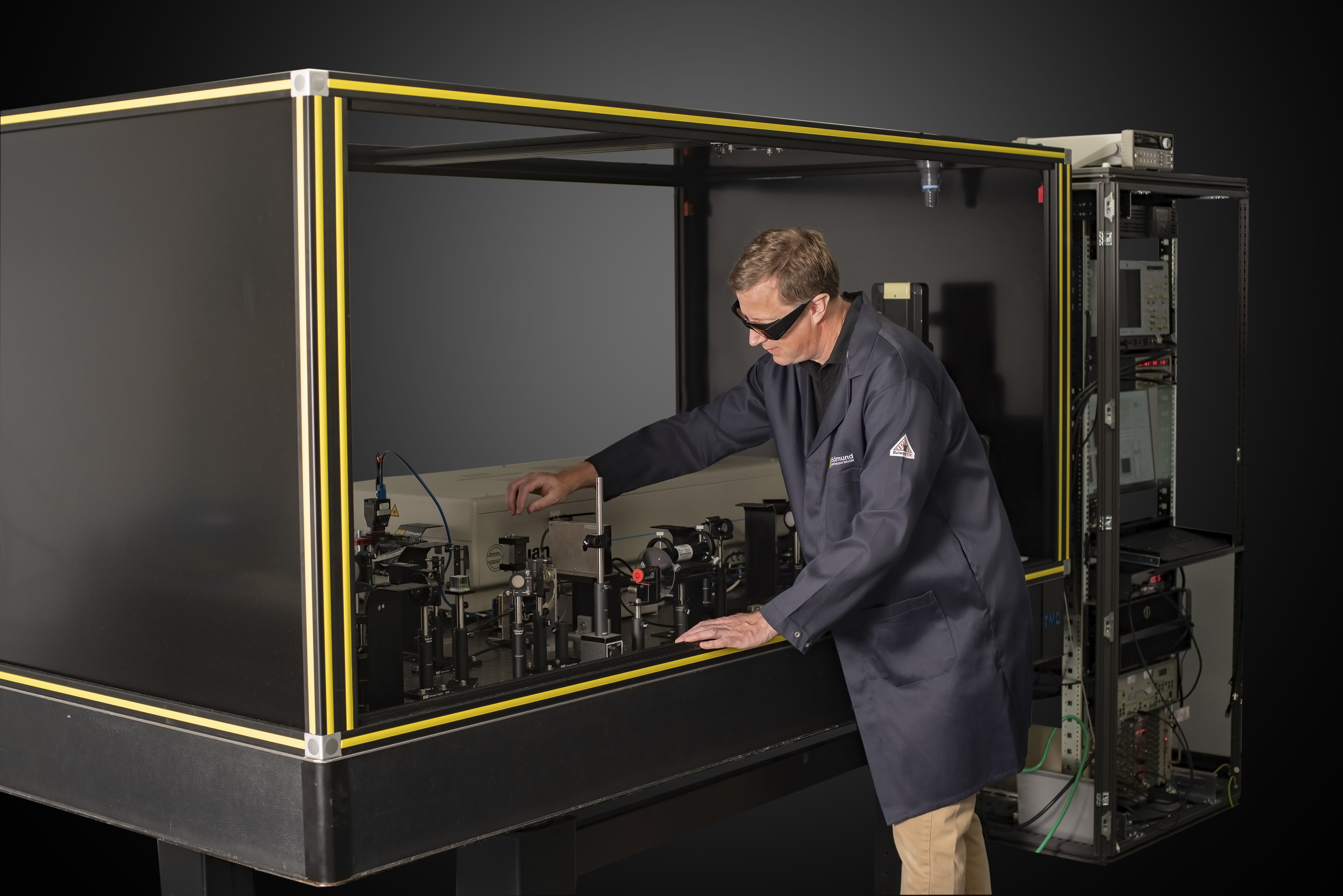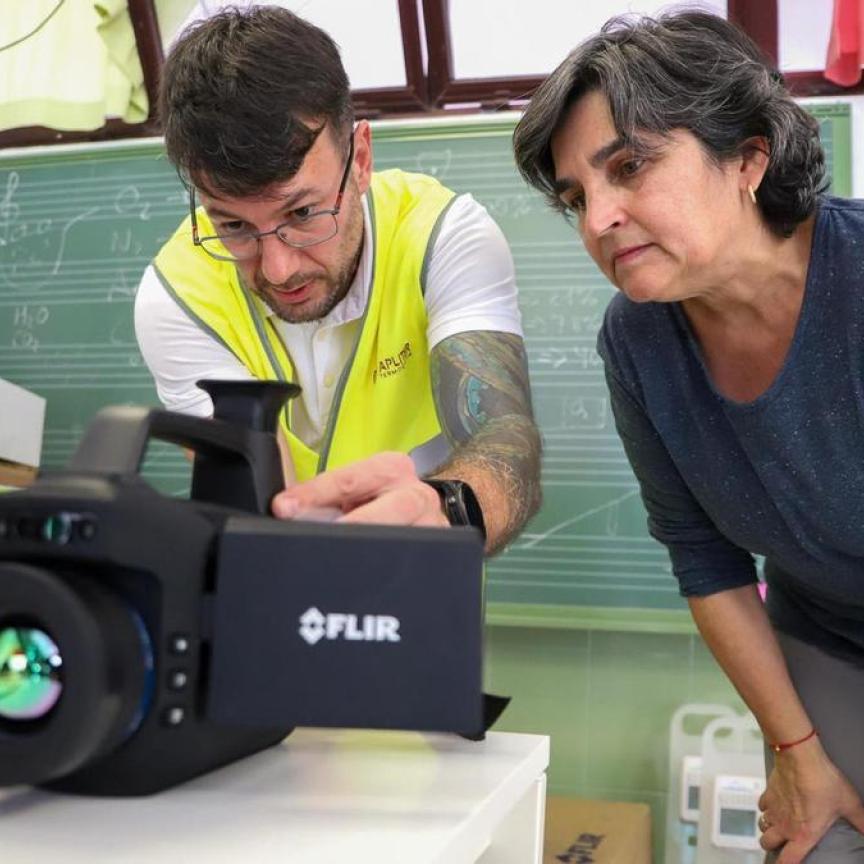Laser damage threshold (LDT) is a critical specification in the design of high-power laser systems for applications ranging from materials processing to medical devices. Laser-induced damage in optical components causes system performance degradation which eventually may lead to significantly higher system costs or even catastrophic component failures.
LDT specifications attempt to clarify what lasers are compatible with an optic or optical assembly, and are defined by the ISO 21254 standard as the “highest quantity of laser radiation incident upon the optical component for which the extrapolated probability of damage is zero”. In other words, the LDT specifies the maximum laser fluence (in J/cm2 for pulsed lasers) or maximum laser intensity (in W/cm2 for continuous-wave [CW] lasers) that an optic can handle before becoming damaged (though in reality it’s not an absolute guarantee).
However, the lack of an industry consensus on how LDT should be tested, how damage should be detected, and how the test data should be interpreted, makes LDT a complicated specification. The current
ISO 21254 standard can produce ambiguous results, in that three companies testing the same optical sample using the same standard may give you three different values.
Dr Matthew Dabney, Principal Laser and R&D Engineer at Edmund Optics, is among those working on a new standard for LDT testing, as well as a testbed for use in-house. He says: “We’re developing a robust LDT testbed at Edmund Optics with enough adjustability to accommodate testing according to the ISO Standards 21254 -1,-2,-3 and -4, as well as newer parameters and protocols, such as those being developed by the Optics and Electro-Optics Standards Council Task Force 7 (OEOSC-TF7).”
High confidence optics manufacturing
The in-house testbed allows Edmund Optics to measure the optics they manufacture with a high degree of confidence and repeatability, allowing them to accurately verify the LDT specifications they publish. “Having an in-house testbed provides us with a quick feedback loop to ensure we reliably manufacture quality laser optics,” adds Dabney.

Edmund Optics’ in-house testbed allows the company to measure the optics they manufacture with a high degree of confidence and repeatability
Uncertainty around the true damage probability of a given LDT value occurs due to various factors during testing, including fluctuations in the test set-up, under-sampling of the optic, and damage detection methods. The testbed developed at Edmund Optics is run using LabView software to control the process and collect the test data. Due to the wavelength penetration depth, different wavelengths probe different damage mechanisms. The 1,064nm wavelength of Nd:YAG, for instance, reaches deeper into a coating and finds underlying defects that might be found at the coating/glass interface, whereas 355nm wavelengths probe the material toughness of a coating.
The laser beam is spatially filtered and measured using a variety of components that are all kept consistently at the same temperature and humidity levels. The testbed is also set up with automated motorised translation so that multiple samples may all be tested at one time without the need for manual change. The system stability and automation combine to achieve a higher degree of test repeatability and less variation in LDT results.
Taking too few samples, or under-sampling, also leads to uncertainty in an LDT value. To ensure that the optic sample being tested is not under-sampled, Dabney employs three different types of tests. The first test is an S-on-1, where a grid of 10 x 10 spots on the surface of the optic receives 200 pulses of the laser per spot. Secondly, a random spot test is run, where each of about 200 “randomly” distributed spots also receives 200 laser pulses in order to test for radial or side-specific distribution. A Raster scan is then undertaken on an area of the optic where this area is completely covered by 200 overlapping spots, which receive 200 pulses each at increasing fluence until catastrophic failure. “With this test,” says Dabney, “we cover a minimum of 4% of the clear aperture of the optic, but it could be used on the full surface if the confidence level is needed.”
The damage to an optic can occur in various forms: from initial discolouration, to some minor surface ablation, to catastrophic failure. Dabney explains: “Another critical part of all this is damage detection. You could hit each spot with the full 200 pulses and move to the next one and adjust the energy, but you’re missing an opportunity to get more information about your sample. So ideally, you’d like to be able to stop the process as soon as damage is detected.”
Dabney has developed the testbed with a series of two shutters controlled by the software.
These automatically shut whenever damage is detected so that information such as DIC images and other readings from the various meters monitoring the sample and beam may be recorded. He says: “Currently, we are using online microscopy at 5X magnification as well as offline DIC to confirm damage on the optic samples.”
This set-up creates enormous volumes of data. Information including spatial profiles, temporal profiles, scatter data, and DIC microscopy images are captured for each of the 200+ pulses on each of the 200+ sites tested, on each of the parts and are all processed to create a final report and LDT value.
The volume of data collected by this testbed using this testing method greatly reduces the uncertainty in the resulting LDT values, and increases confidence that the tested optic will not fail when placed into a real-world application.
Edmund Optics designs and manufactures laser optics coatings, components, and assemblies optimised for high-power laser systems, and uses a wide variety of state-of-the-art metrology technologies to ensure that all specifications are met. Our experienced teams support your project from concept, to design, to quoting, order placement, and order fulfilment.
Further information: www.edmundoptics.co.uk


